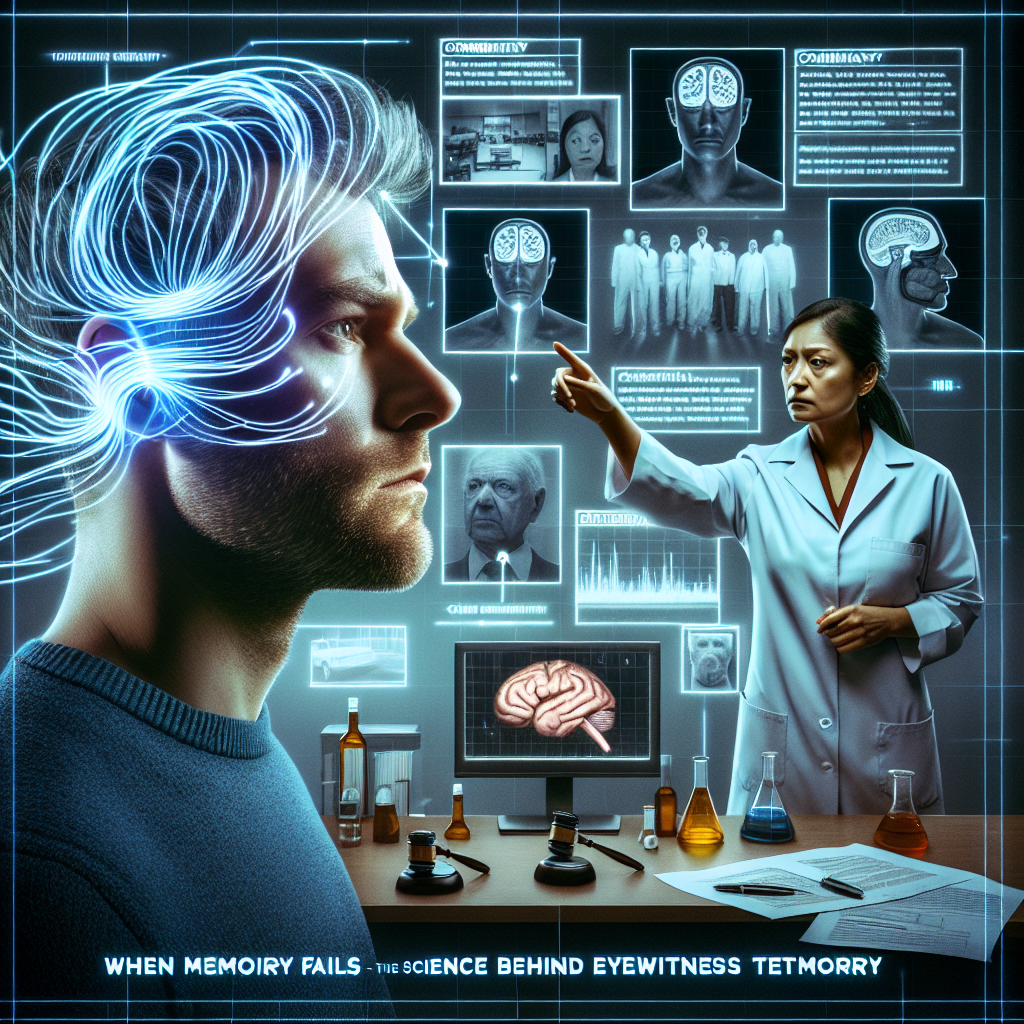Introduction
Imagine standing in a courtroom, watching the defendant meticulously described by an eyewitness—their confident testimony seemingly solid. Yet, crucial details may be flawed, or worse, completely fabricated. When Memory Fails: The Science Behind Eyewitness Testimony explores the intricate dynamics of human memory, highlighting its susceptibility to distortion and leading us to question the reliability of one of the most critical elements in legal proceedings: eyewitness accounts. In a world where convictions can hinge on a fleeting moment of recollection, understanding the science behind memory is not just important—it’s essential.
The Fragile Nature of Memory
Understanding Memory
Memory is not a perfect recording but rather a reconstructive process. Our brains synthesize information based on our perceptions, experiences, and emotions at any given moment. This reconstruction can lead to inaccuracies, raising urgent questions about memory reliability in high-stakes scenarios like criminal trials.
Case Study: The Ronald Cotton Case
In 1984, Jennifer Thompson was the victim of a violent crime. During her testimony, she confidently identified Ronald Cotton as her assailant. However, years later, DNA evidence revealed he was innocent. This case poignantly exemplifies how memory can mislead, emphasizing that When Memory Fails: The Science Behind Eyewitness Testimony can have dire consequences.
The Mechanisms of Memory Formation
Encoding, Storage, and Retrieval
Memory formation occurs in three stages:
- Encoding: The initial experience.
- Storage: How that experience is retained in our memory.
- Retrieval: Accessing stored memories when needed.
Errors can occur at any of these stages, which is critical when we consider eyewitness testimony in legal settings.
The Role of Stress and Emotion
Under stress, the brain tends to focus on central details while blurring peripheral ones. For instance, during a traumatic event, a witness might remember the weapon used but forget significant details about the perpetrator’s appearance.
Case Study: The Boston Marathon Bombing
In the aftermath of the Boston Marathon bombing in 2013, numerous eyewitnesses provided testimonies that varied significantly. Those under emotional duress recalled some details vividly, while others were completely wrong. When Memory Fails: The Science Behind Eyewitness Testimony illustrated the memory distortions caused by high-stress scenarios.
The Influence of Suggestive Techniques
Misinformation Effect
Post-event information can alter recollections, a phenomenon known as the misinformation effect. Subsequent discussions, media reports, and leading questions can distort a witness’s memory.
Case Study: The Loftus and Palmer Experiment
Psychologist Elizabeth Loftus conducted an experiment where subjects watched a video of a car accident and were later questioned about it. The wording of questions altered their recollections; for instance, the word "smashed" led to higher estimates of vehicle speed. This experiment underscores the profound influence of suggestion on memory, corroborating that When Memory Fails: The Science Behind Eyewitness Testimony can often hinge on unintentional cues.
Memory and Cognitive Bias
The Role of Biases
Cognitive biases can blur our perception. Factors such as racial bias, familiarity, and personal beliefs can affect what an eyewitness recalls, often unconsciously.
Case Study: The Death of Trayvon Martin
In the case of Trayvon Martin’s death, biases shaped the testimonies of various witnesses. Their backgrounds influenced how they interpreted events, illustrating that memory is not just about recollection—it’s also about the context and perspective from which an eyewitness views an incident.
The Legal Implications of Memory
Current Practices in Eyewitness Testimony
Many legal systems still heavily rely on eyewitness accounts, unaware of the documented imperfections in human memory. Jurors often perceive eyewitness testimony as ironclad evidence, but this deference is increasingly being scrutinized.
Recommendations for Legal Practitioners
Legal professionals need to consider adopting best practices to mitigate memory biases:
- Avoid leading questions during cross-examination.
- Implement lineup procedures that minimize bias.
- Educate jurors on the fallibility of memory.
Conclusion
When Memory Fails: The Science Behind Eyewitness Testimony is not merely about legal scrutiny; it’s about understanding the broader implications of memory in our daily lives. Recognizing how easily memories can be distorted empowers us to approach eyewitness testimony with caution and skepticism. Through education and awareness, we can strive to cultivate a legal and societal environment where justice is built on more than just the shaky grounds of recollection.
FAQs
1. Why are eyewitness testimonies often considered unreliable?
Eyewitness testimonies can be unreliable due to memory distortions, biases, emotional states, and external influences that can alter an individual’s recollection of events.
2. What is the misinformation effect?
The misinformation effect occurs when a person’s memory of an event is altered by subsequent information, such as leading questions or discussions.
3. How can stress affect memory recall?
Stress can enhance memory for central details but impair recall of peripheral information, which is crucial in high-pressure situations like witnessing a crime.
4. What measures can be taken in legal settings to improve eyewitness reliability?
Legal settings can implement standardized procedures for lineups, avoid leading questions, and provide jurors with education about memory fallibility.
5. Are there strategies witnesses can use to improve their memory recall?
Witnesses can try to remain calm, avoid discussing the event with others post-incident, and seek professional assistance to improve the accuracy of their memories.
In exploring When Memory Fails: The Science Behind Eyewitness Testimony, we uncover not only the intricacies of human cognition but also the profound implications this knowledge bears on the pursuit of justice. Understanding may not fully repair the damage done by wrongful convictions, but it can help prevent future injustices—one testimony at a time.

